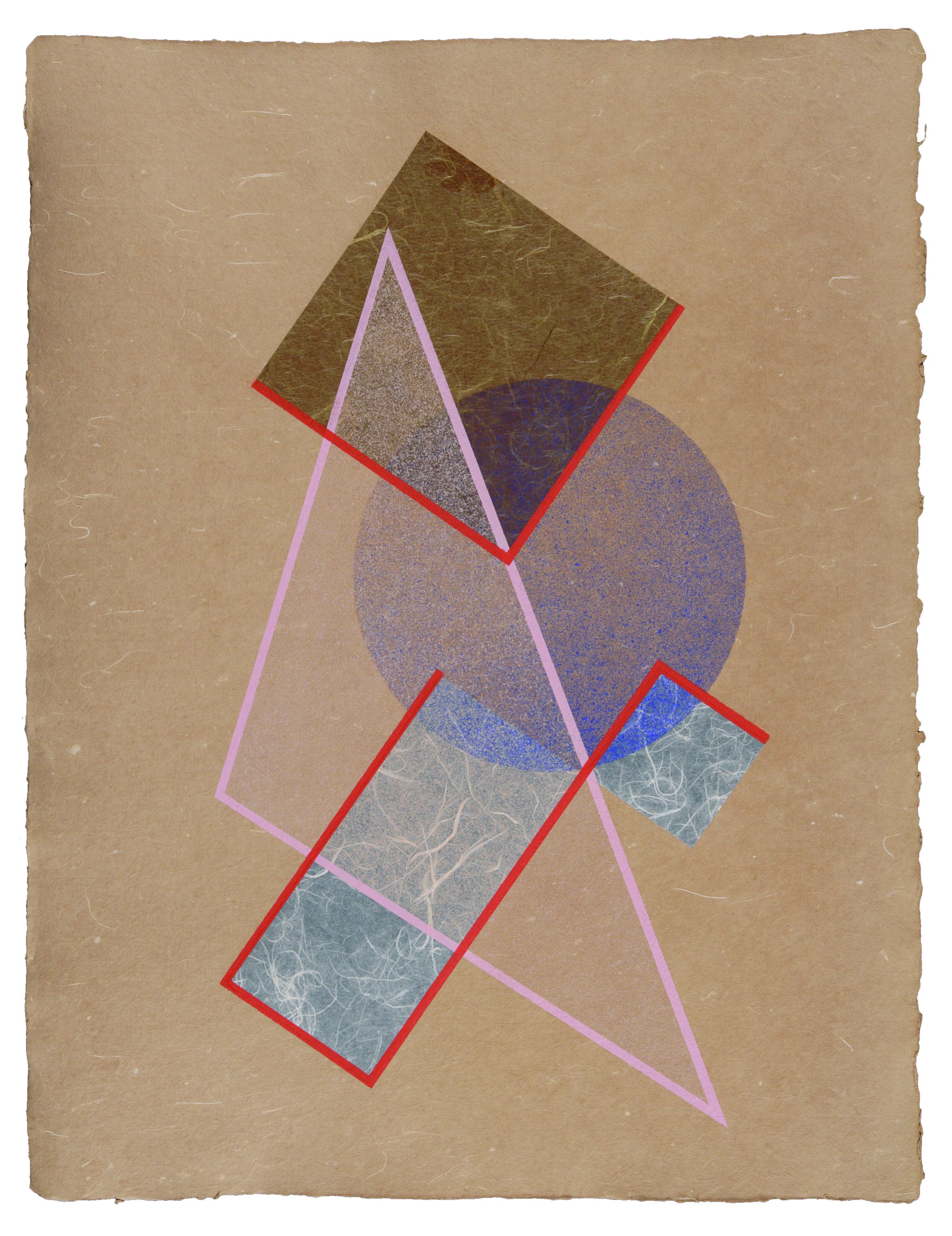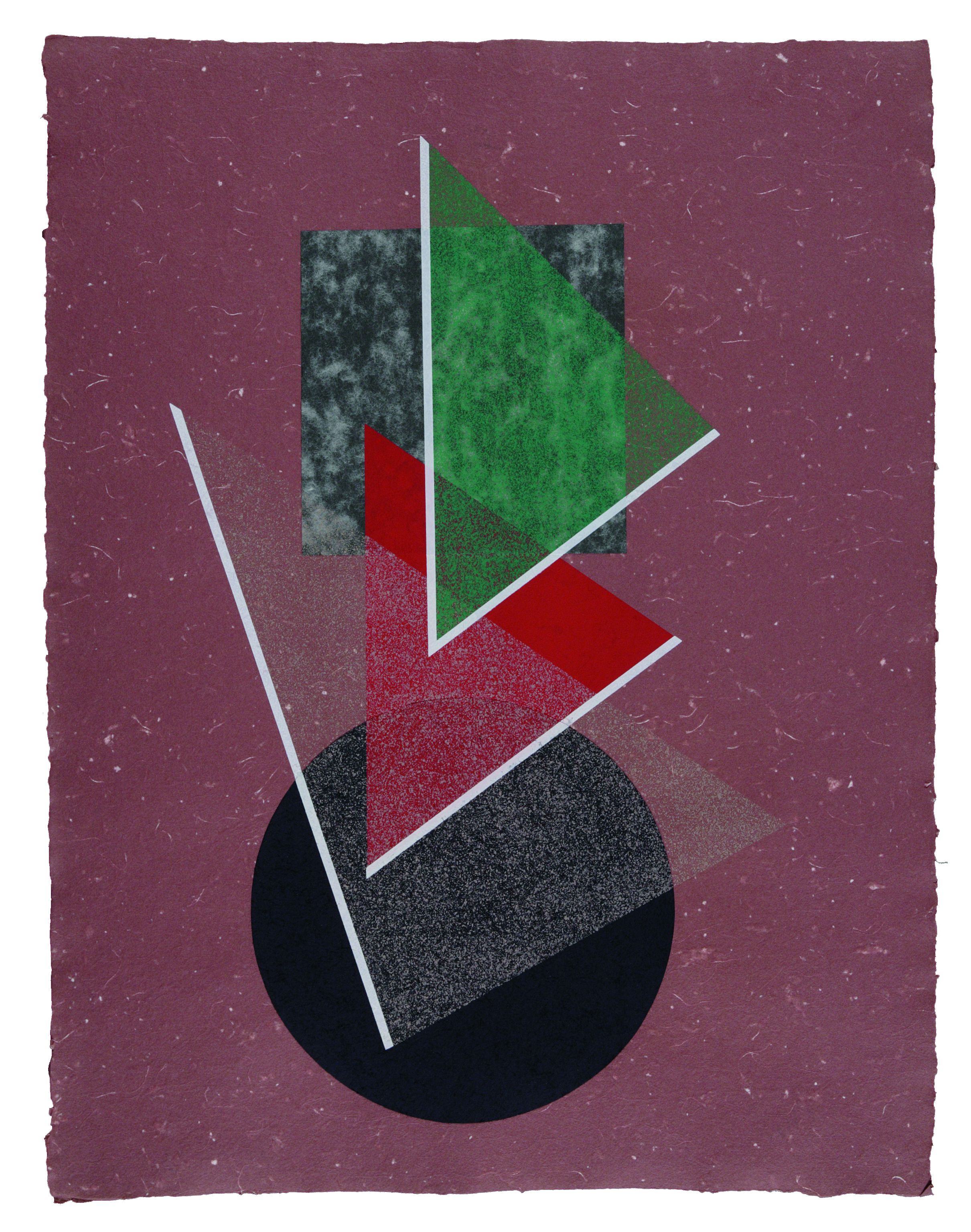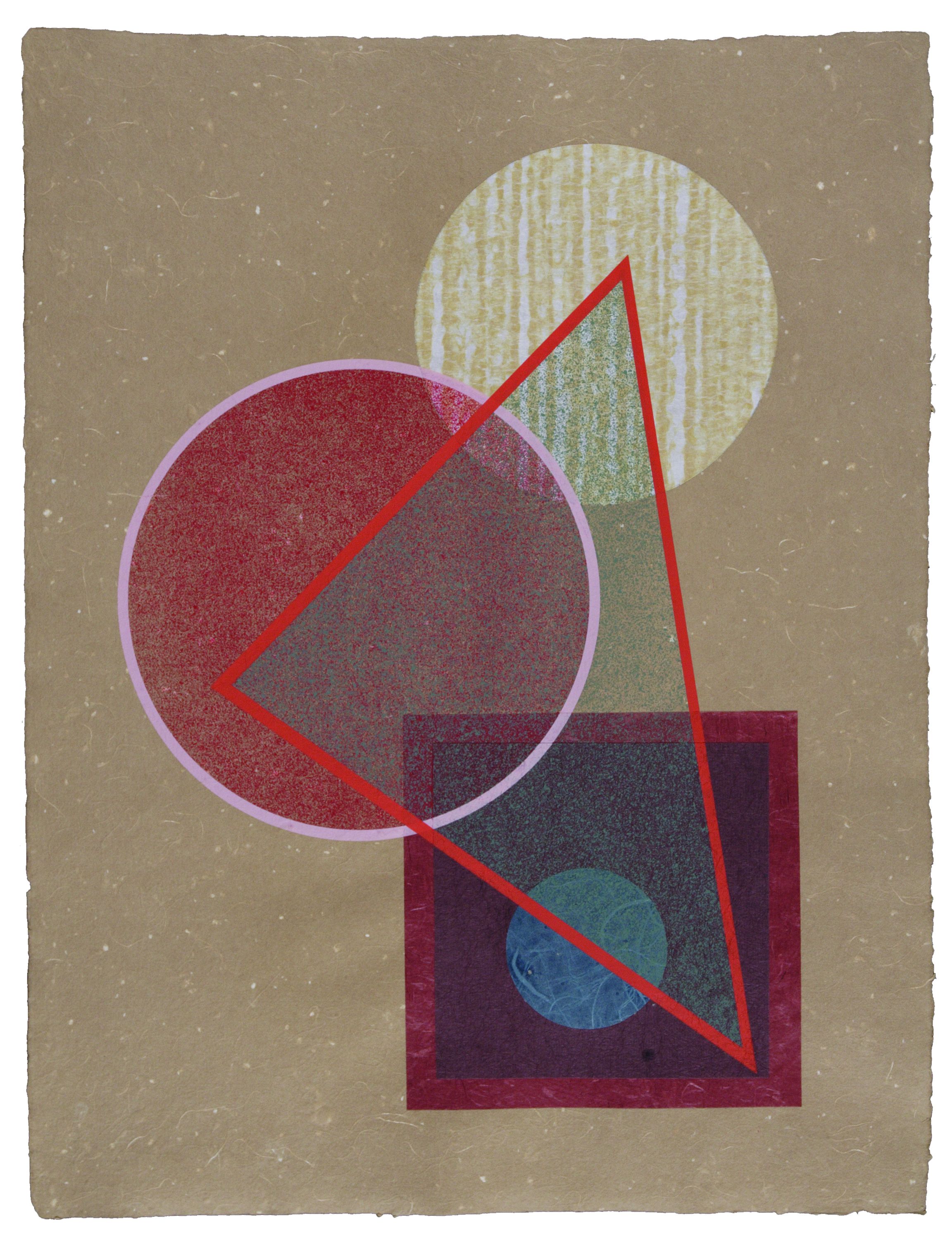Box with three screenprints on Japanese handmade collage paper
Dimensions: 65.5 x 51.5 cm each
Signature, inscriptions, markings: each signed and dated at lower right, numbered at lower left verso
Copy Number: 35/90
Printer and editor: Edition Hoffmann, Friedberg 1979
Text: César Domela
Accession Number: 1000258.1–3
Constructivism - yes, but please with a relaxation of the strict rules of composition. This was the concern of the Dutch artist César Domela as a member of the group of "Abstract Hanover"1, to which Rudolf Jahns also belonged. In the style of his compatriots Piet Mondrian and Theo van Doesburg of the artists' association "De Stijl", which Domela had also joined in 1924,2 he developed the "principle of diagonally placed right-angled contrapositions"3 and thus distanced himself from the dogmatic rigidity of the orthogonal compositional elements of Neo-Plasticism.
Three sheets with compositions of rectangles, triangles and circles are arranged here as a triptych. The number of geometric elements varies from sheet to sheet, but they are in proportion to each other. The superimposition of the almost transparent forms creates a sense of depth, but without dissolving it, since their outlines are emphasized and clearly define the basic geometric elements. On the left side of the triptych, three rectangles and a circle are connected by a triangle. On the right, three circles and a rectangle are seen, which in turn are linked by a triangle. In the middle image, the shape of a triangle also represents the connection between the circle and the rectangle, but this time in triplicated form. Each element is thus included three times, so that the individual panels, in which the triangle always assumes a synthetic function, are in a balanced relationship to one another, while each nevertheless plays its own unique role: The rectangle, characterized by its right angles, could take the function of a thesis. Opposite to this, the circle, without any angle, stands as an antithesis. The triangle, with its variety of possible angles, represents a synthesis of the two preceding elements.4 It connects the individual compositions, dominates their respective appearances, and mediates the transition between rectangular and circular forms in the center of the group of three.
Looking at Domela's entire creative period, this composition can be described as a stage in his stylistic development: From neoplastic constructions in the wake of Mondrian, Domela progressed through less austere compositions, finally, with his later curved reliefs, to the absolute dissolution of angles and flatness.
Jari Ortwig
1 Compare ex. cat. Die Abstrakten Hannover. Internationale Avantgarde 1927–1935. Sprengel-Museum Hannover 1987, o. S.
2 Compare ex. cat. César Domela. Werke 1922–1972, Hrsg. Karl-Heinz Hering, Kunstverein für die Rheinlande und Westfalen, Düsseldorf 1972, o. S.
3 Willi Rotzler, Konstruktive Konzepte, Zürich 1995, S. 70.
4 Compare Gerhard Weber, César Domela. Retrospektive, Annely Juda Fine Art London 1973, o. S.


